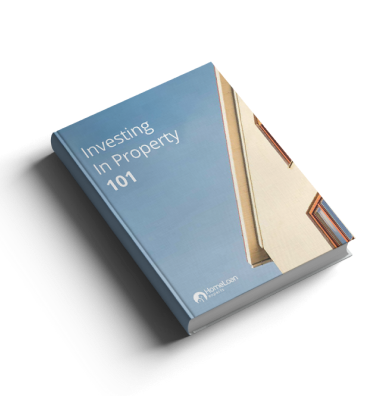How To Use The Investment Property Calculator
This calculator analyses your investment property’s cashflow through a simple 5-step process. Each step builds on the previous one to give you a complete financial picture.
Step 1: Property Details
Enter your purchase price, such as $800,000. Set the expected annual growth rate for the area, typically between 3-8% based on local market conditions. Select your property type from the dropdown (House, Unit, or Townhouse) as this affects rental yields and maintenance costs. Choose whether to calculate depreciation, which can provide tax benefits by allowing deductions for building wear and fixtures.
Step 2: Loan Details
Enter the amount you’ve saved for your deposit. Then, enter the current investment loan interest rate, typically around 6-7%. Select whether you’re borrowing as an individual or through a trust structure. Choose your repayment type, “Interest Only” keeps payments lower initially but doesn’t reduce your loan balance, while “Principal and Interest” builds equity faster.
Step 3: Income Details
Enter your gross annual income, which determines your tax bracket and negative gearing benefits. Input your expected weekly rental income after researching comparable properties in the area. Set the annual rent increase percentage, typically 3-4% to account for inflation and market growth over time.
Step 4: Expenses
Review the calculator’s estimated annual expenses and adjust as needed. Council rates typically range from $2,000-$4,000 depending on location and property value. Insurance costs around $1,500 annually. Property management fees are usually 6-8% of rental income, shown here as $4,400. Maintenance and repairs budget around $1,200 annually, though this varies by property age and condition. Water rates may apply if paid by the landlord. You’ll also see an Inflation field. A typical inflation rate is around 3%, but you can adjust it based on your expectations or market trends.
Step 5: Results
The calculator provides comprehensive results including your monthly cashflow assessment over 1, 5, 10, and 30 years. You’ll see rent growth projections, negative gearing tax benefits, loan repayments, and overall monthly cashflow position. The property value projection shows how your investment grows over time, with loan balance reducing as you make repayments.
Understanding Your Results
Positive monthly cashflow means the property generates profit after all expenses. Negative cashflow means you contribute money monthly, but this creates tax deductions through negative gearing. The calculator shows how your position improves over time as rents increase and loan balances decrease. Most investment properties start with negative cashflow but become positive as rental income grows and loan payments reduce the principal.
Apply For An Investment Loan
If you’ve used the calculator and would like to discuss your options, please call 1300 889 743 to speak with one of our mortgage experts.
Talk To An ExpertProperty Investment Guide 101
Learn the ins & outs of investing in properties from an experienced property investor and founder of Home Loan Experts, Otto Dargan.

Frequently Asked Questions
How Much Deposit Do I Need For An Investment Property In Australia?
In Australia, a 20% deposit is generally recommended for an investment property loan. This allows you to avoid paying Lenders Mortgage Insurance (LMI).
However, some lenders may accept a smaller deposit as low as 5% if you have a strong credit history and stable income. In these cases, you could borrow up to 95% of the property’s value, provided you have at least 5% in genuine savings.
Keep in mind, borrowing with a lower deposit means you’ll likely need to pay LMI and cover additional upfront costs such as stamp duty, bank fees, and legal expenses.
What Is Cashflow In Investment Property?
How Much Tax Is Paid On Rental Income?
Are Investment Loans Tax Deductible?
How Do You Calculate The Investment Value Of A Property In Australia?
How Is Capital Gains Tax Calculated On An Investment Property In Australia?
What Are The Expenses Associated With An Investment Property?
Still need answers? We're here to help!
Ask an expertOur team of mortgage experts will assist you within 24 hours.





